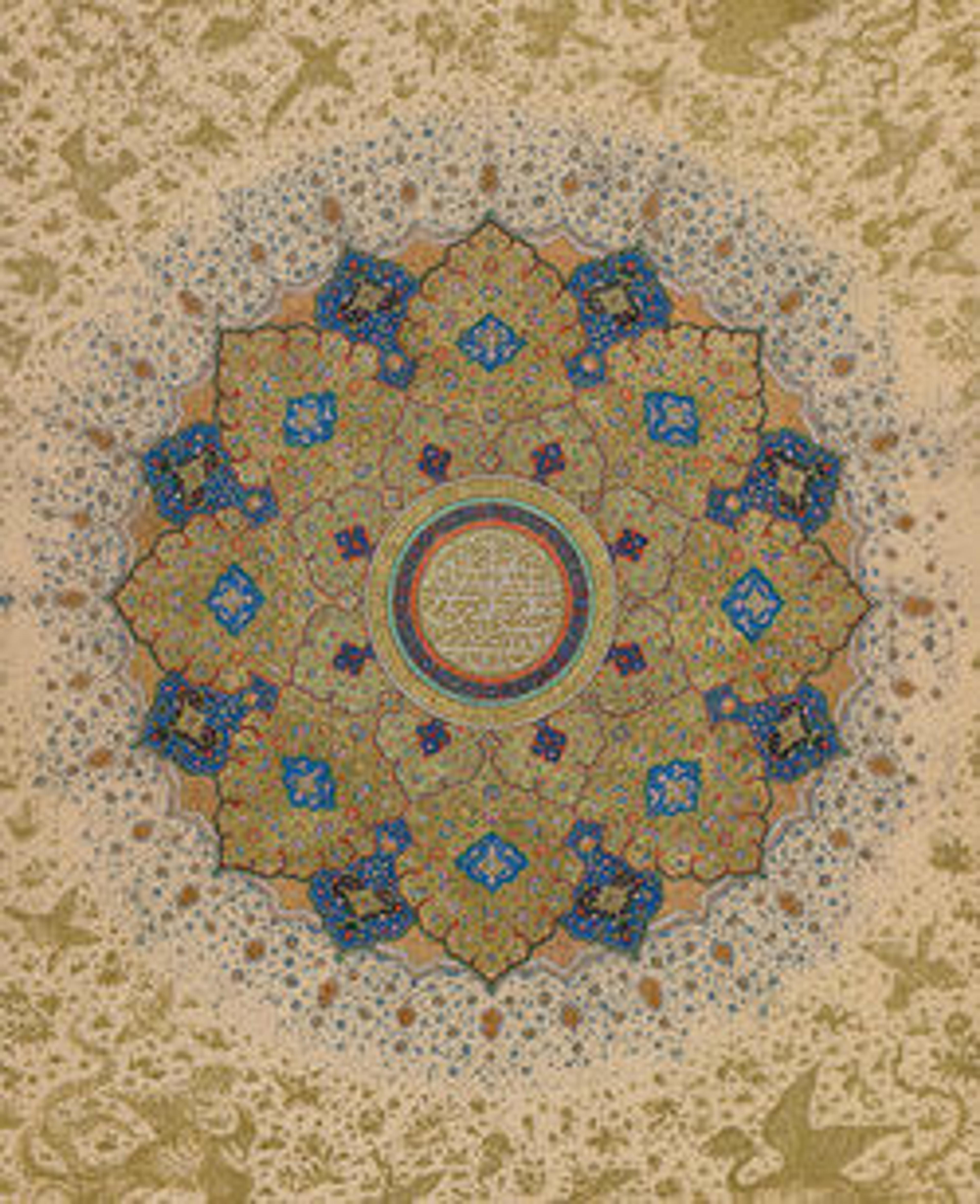Painted Dado Panels
This dado panel was excavated from a room in the Tepe Madrasa area of Nishapur that once had a lively scheme of painted decoration. The upper section of the wall was colored a deep red, followed by a short horizontal frieze of hexagons and diamonds underneath, and then this four-foot high dado with a frieze of alternating square and rectangular panels. Each panel in the dado was framed with blue, red, and white lines; the rectangular panels were filled with a pattern akin to quartersawn marble, and the square panels had a variety of feathery shapes, scale-covered elements, and interlaced ribbons ending in stylized eyes and hands. This symbolism has no known parallels outside Nishapur, although amulets in the shape of eyes and hands were used to ward off the evil eye. It seems unlikely, however, that this basic interpretation encompasses the whole meaning of the present work.
Artwork Details
- Title:Painted Dado Panels
- Date:9th century
- Geography:Excavated in Iran, Nishapur
- Medium:Stucco; painted
- Dimensions:H. 40 3/8 in. (102.6 cm)
W. 53 1/2 in. (135.9 cm)
D. 2 in. (5.1 cm)
Wt. 195 lbs. (88.5 kg) - Classification:Stucco
- Credit Line:Rogers Fund, 1940
- Object Number:40.170.176
- Curatorial Department: Islamic Art
More Artwork
Research Resources
The Met provides unparalleled resources for research and welcomes an international community of students and scholars. The Met's Open Access API is where creators and researchers can connect to the The Met collection. Open Access data and public domain images are available for unrestricted commercial and noncommercial use without permission or fee.
To request images under copyright and other restrictions, please use this Image Request form.
Feedback
We continue to research and examine historical and cultural context for objects in The Met collection. If you have comments or questions about this object record, please contact us using the form below. The Museum looks forward to receiving your comments.
